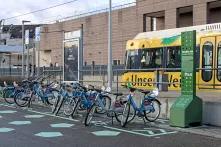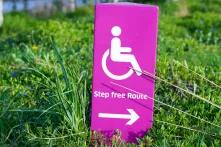
The technical problems with international rail in Europe are quite well understood – a multitude of different gauge, signalling and electrification systems make running trains cross-border more complicated than running them within one country. But are there, I asked myself, ways to improve the situation while not challenging the fundamental status quo? Ways where, at the margin, or at the border if you like, some basic changes could improve matters for international railway travellers?

Back in 2013 former chair of the Transport Committee in the European Parliament, Michael Cramer, had attempted exactly this – he proposed 15 “Missing Links” that ought to be fixed. Cross border railway lines that had fallen into disrepair or had been dismantled and could be re-activated. The problem – as I discovered when re-assessing each of the links in Cramer’s report – was that in only one case (Selb-Plößberg (DE) – Aš (CZ)) had there been any progress in the years since.
So in the summer of 2022 I set about working out whether any of the other 14 of the projects Cramer had listed had any future, but also aimed to go a long way beyond that – to cross every internal border of the European Union you can cross by train in one massive journey, and to see what I could discover on the ground. Where trains do not run any longer I took to my folding bicycle, and armed with a camera and a drone photographed and filmed what I found. The project was called #CrossBorderRail and encompassed 95 border crossings, 30,000km by train, 900km by bicycle, and the rest by bus, ferry and taxi.
Re-activating cross border railway lines that have fallen into disrepair is, it turns out, very complex in many places. The Nijmegen (NL) – Kleve (DE) line crosses the town square in Groesbeek. I can understand the people there do not want trains trundling past their bakery! Bridges destroyed at the end of World War II between Breisach (DE) and Volgelsheim (FR), and between Bad Radkersburg (AT) and Gorna Radgona (SI), are logistically complicated to reconstruct. That is not to say re-activating lines does not make sense, but, based on my research, it is hard to make swift progress in each of these cases.
Much simpler to fix are places where tracks exist and are active, but no passenger trains run. Were Hamont (BE) and Weert (NL) in one country, there would long have been passenger trains running on the line (that would connect Antwerpen with Eindhoven) but Belgium wants to run passenger trains, while Netherlands does not. There are similar cases between Ormenio (GR) and Svilengrad (BG), and Daugavpils (LV) and Turmantas (LT). In some of these cases you need no extra trains and no extra staff – just a little bit of money for some diesel for a few extra kilometres.
Even simpler to fix should be the multitude of places where passenger trains run, but timetables are not coordinated at the border stations. Passengers on routes such as Tallinn (EE) to Riga (LV) get stranded for more than three hours at the border station Valga because of the absence of timetable coordination, and a Marseille (FR) – Genova (IT) trip takes almost two hours longer than it should because trains are not synchronised at Ventimiglia. Poor timetables render the Mons (BE) to Aulnoye-Aymeries (FR) route unviable for everyday use.
I also encountered a slew of other absurdities – diesel trains running on an EU-financed electrified line between Vigo (ES) and Porto (PT). Timetables for cross border connections missing in international databases for three of the five cross border lines between France and Spain. And 4km of dilapidated infrastructure across a tiny sliver of Poland between Liberec (CZ) and Zittau (DE) causing timetable problems there.
In other words, there are a whole host of railway projects that could be done right now with very little money, and would make a major impact on cross border rail in at least 19 countries. These priority projects – 20 in total – are explained in detail here.
Yet if these fixes are simple, why has no-one actually stepped up to solve these problems? The answer lies with what Josef Doppelbauer, head of the EU Agency for Railways calls “collective irresponsibility”. Railway companies generally do not want to fix cross border problems, as national services earn them a greater share of their revenue, and their political masters are national as well. National politicians think likewise – what happens on the other side of the border is someone else’s problem.
That then is where the EU should step in, but until now largely has not – despite Michael Cramer’s best efforts. The European Commission claims to have set the framework to allow these cross border connections to flourish, and even named 2021 the “European Year of Rail” to highlight rail’s potential. But the Commission has so far failed to get its hands dirty, to get down to the level of the problems at the individual borders, to act as a broker between the different actors to fix the practical problems on the ground. Indeed based on my conversations with policymakers throughout the #CrossBorderRail project, it is not a given that the European Commission knows where the problems even are.
None of the problems my research highlights – missing services, ill coordinated timetables, and data and ticketing problems – are especially complicated or expensive to solve. But national railway companies and national governments are not solving them, so the EU needs to step up. The problem is cross border, and so the solution likely has to be supranational.


